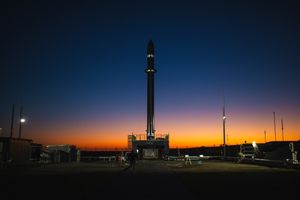
The global economy is on the cusp of a profound transformation, driven by the urgent shift towards green energy, widespread electrification, the burgeoning electric vehicle (EV) market, and the explosive growth of artificial intelligence (AI) and data center infrastructure. At the heart of this revolution lies copper, a metal now experiencing an unprecedented surge in demand, pushing it into the spotlight as a critical case study for a potential new commodities super cycle. This escalating demand is poised to create a significant supply gap within the next decade, threatening to derail decarbonization efforts and technological advancement while reshaping global markets.
Current global consumption of refined copper, standing at nearly 27 million tonnes in 2024, is projected to skyrocket, with some forecasts anticipating a doubling to nearly 49 million metric tons (MMt) by 2035. This dramatic increase, far outstripping projected supply, signals a looming deficit that could reach 6.5 million metric tons by 2031 or even 9.9 million metric tons by 2035 under less optimistic scenarios. The implications are vast, impacting everything from manufacturing costs and supply chain stability to geopolitical strategies and the pace of innovation across multiple industries.
The Electrifying Demand: What Happened and Why It Matters
The world is witnessing a perfect storm of demand drivers for copper, a metal revered for its unparalleled electrical and thermal conductivity. This confluence of factors has propelled copper from a foundational industrial commodity to a strategic mineral indispensable for the 21st century's defining technological and environmental shifts. The immediate trigger is the accelerating global push for decarbonization and digital transformation, both inherently copper-intensive.
The green energy transition is a primary catalyst, with renewable energy systems like wind turbines and solar photovoltaic (PV) installations requiring substantially more copper than traditional power sources. Wind farms, for instance, utilize significant amounts of copper for generator windings, transformers, and power cables, while solar panels depend on it for wiring, inverters, and grounding. The expansion of electricity grids to integrate these decentralized renewable sources and manage their intermittent supply further necessitates millions of feet of copper wiring and high-capacity transmission lines. Indeed, demand for copper in electricity networks is expected to grow by 49% by 2035, for solar panels by 43%, and for wind power by 38%.
Simultaneously, the electrification of transportation is another massive draw. Electric vehicles (EVs) are copper guzzlers, consuming 3-4 times more copper than their internal combustion engine (ICE) counterparts. A single battery electric vehicle (BEV) contains approximately 83 kg of copper, compared to just 23 kg in an ICE car. This is due to its extensive use in electric motors, battery systems, and intricate wiring harnesses, which are typically four times longer than those in gasoline-powered cars. The rapid build-out of EV charging infrastructure, including superchargers, also demands substantial copper for power converters and grid connections. Copper demand from the EV sector alone is projected to surge to over 2.5 million tonnes by 2030.
Adding another layer of intense demand is the unprecedented expansion of artificial intelligence (AI) and data center infrastructure. AI servers draw 4-6 times more power than traditional servers, necessitating thicker copper busbars and cabling for efficient power transmission. The immense heat generated by AI workloads requires advanced liquid cooling systems, often using copper cold plates, with each AI server containing 2-4 kg of copper in cooling components. Furthermore, the need for higher bandwidth connections for AI workloads increases the use of copper-based Category 8 cabling. While data centers currently account for less than 1% of global copper demand, this is projected to rise to 6-7% by 2050, with hyperscale AI data centers potentially consuming up to 50,000 tons of copper per facility.
The Market's Copper Conundrum: Winners, Losers, and Volatility
The surging demand for copper, juxtaposed against a constrained supply, is creating a volatile market environment with significant implications for various sectors and companies. Copper futures have seen considerable upward pressure, climbing above $4.6 per pound in mid-September 2025, after reaching an all-time high of $5.94 in July 2025. This price appreciation reflects the tightening global supply and robust demand fundamentals, indicating that the market is beginning to price in the anticipated deficit.
Copper Miners: The Obvious Winners (with caveats) Companies primarily engaged in copper mining and refining stand to be major beneficiaries of sustained high copper prices. Giants like Freeport-McMoRan Inc. (NYSE: FCX), BHP Group Ltd. (ASX: BHP), Southern Copper Corporation (NYSE: SCCO), and Antofagasta plc (LSE: ANTO) are positioned to see increased revenues and profitability. However, even these major players face challenges. Declining ore grades (down 40% since 1991) and the lengthy, capital-intensive process of developing new mines mean that increasing supply is not straightforward. Despite billions in investment, many producers project flat production, highlighting the difficulty in meeting future demand. Smaller, agile mining companies with promising undeveloped reserves, such as Hudbay Minerals (NYSE: HBM) or Ero Copper (NYSE: ERO), could also see significant upside if they can bring new projects online efficiently.
Manufacturers and Tech Giants: Facing Higher Costs Conversely, industries heavily reliant on copper as a raw material will likely face increased input costs. This includes manufacturers of renewable energy components (wind turbines, solar panels), electric vehicle manufacturers, and companies building out AI and data center infrastructure. Automakers like General Motors, Ford, and Volkswagen Group, deeply invested in EV production, will see their material costs rise. Tech behemoths like Microsoft, which operates hyperscale data centers, and Nvidia, whose advanced AI hardware requires robust power and cooling infrastructure, will also grapple with higher expenses for construction and operation. While these companies may absorb some costs, sustained high copper prices could eventually translate to higher prices for consumers or slower deployment of new technologies.
Recycling and Substitute Innovators: Emerging Opportunities The impending supply gap also creates a fertile ground for innovation in copper recycling and the development of substitute materials. Companies specializing in advanced recycling technologies or those pioneering alternative conductive materials could emerge as significant players. While finding a direct, cost-effective substitute for copper's unique combination of conductivity, malleability, and durability remains challenging, the economic incentive for such innovation is growing. Investment trends indicate a shift towards copper as an essential commodity, with an estimated $250 billion to $2.1 trillion needed by 2050 to meet future demand, signaling a long-term bullish outlook for the metal.
Broader Implications: A New Commodities Super Cycle?
The surging demand for copper and the looming supply deficit are not merely market fluctuations; they represent a fundamental shift with far-reaching implications, potentially signaling the dawn of a new commodities super cycle. This event fits squarely into broader industry trends emphasizing decarbonization, digitalization, and electrification, positioning copper as a linchpin for global progress. The International Energy Agency (IEA) has sounded the alarm, warning that copper shortages could derail Net-Zero Emissions by 2050 targets, underscoring its strategic importance.
The ripple effects of a sustained copper shortage would be profound. Competitors across various sectors would face uneven playing fields, with those securing reliable copper supplies gaining a distinct advantage. Partners in complex supply chains, from component manufacturers to end-product assemblers, would experience unprecedented strain, leading to potential production delays and increased costs. For example, a delay in grid expansion due to copper scarcity could slow down the integration of new wind and solar farms, impacting renewable energy developers and utilities alike.
Regulatory and policy implications are already emerging. The US has designated copper as a critical mineral, a move that could unlock policy support, although significant barriers to domestic mining remain. Governments worldwide are being urged to intervene, as market forces alone may not resolve the problem. This includes calls for increased refining capacity in developed countries and fostering partnerships with resource-rich developing nations to diversify supply chains. The environmental and social permitting processes for new mines are a major bottleneck, highlighting the tension between environmental protection and the need for critical minerals.
Historically, major technological shifts have triggered commodity super cycles. The 20th-century scramble for oil, driven by the advent of the internal combustion engine and industrialization, serves as a powerful precedent. The current situation with copper, fueled by the green energy revolution and digital transformation, mirrors this historical pattern, suggesting a similar period of intense competition for resources, geopolitical maneuvering, and significant economic restructuring. The scale and speed of the current transition, however, may make this copper-driven super cycle even more impactful.
What to Pay Attention to Next: Navigating the Copper Horizon
As the world grapples with the accelerating demand for copper, several key areas warrant close attention in the short and long term. The actions taken by governments, industries, and investors in the coming months will largely dictate the trajectory of this critical commodity and its impact on the global economy.
In the short term, market participants should closely monitor copper price movements for signs of sustained upward pressure or increased volatility, which could indicate further tightening of supply. Any new announcements regarding production cuts from major mining regions or unexpected disruptions at key mines will also be critical. Furthermore, policy developments, especially those related to critical mineral designations, permitting reform, or strategic partnerships for supply chain diversification, will offer clues about governmental responses to the looming deficit. The pace of investment in new mining projects, particularly those with shorter development timelines, will be a key indicator of the industry's ability to respond to demand.
Looking further ahead, the long-term possibilities revolve around the ability to bridge the projected supply gap. This will require significant strategic pivots from both the supply and demand sides. On the supply side, massive investments in new mining capacity, improved ore extraction technologies, and more efficient refining processes are essential. On the demand side, greater material efficiency, innovation in substitute materials, and a substantial increase in recycling efforts will be crucial. The role of secondary copper (recycled material) in meeting demand is expected to grow, and advancements in urban mining techniques will become increasingly important.
Potential scenarios range from a severe, prolonged copper shortage that significantly slows the green energy transition and technological advancement, to a more managed outcome where concerted global efforts mitigate the deficit. Market opportunities will emerge for companies that can innovate in copper extraction, processing, recycling, or the development of alternative technologies. Conversely, challenges will arise for industries heavily reliant on copper that fail to adapt their supply chain strategies.
Conclusion: Copper's Enduring Significance in a Transforming World
The surging demand for copper, driven by the intertwined forces of the green energy transition, electrification, electric vehicles, and the relentless expansion of AI and data center infrastructure, presents a critical challenge and a defining moment for the global economy. The projected significant supply gap underscores copper's irreplaceable role as the "metal of electrification" and its enduring significance in a transforming world.
The key takeaway is that copper is not just another commodity; it is a strategic resource whose availability will directly influence the success of global decarbonization efforts and the pace of digital innovation. The market moving forward will likely be characterized by sustained high prices, increased volatility, and intense competition for supply. Investors should closely watch for developments in new mine projects, advancements in recycling technologies, and shifts in governmental policies related to critical minerals. The actions of major mining companies, technology giants, and policymakers will collectively shape the future of copper and, by extension, the trajectory of the global economy in the coming decades. The coming months will provide crucial insights into how the world addresses this fundamental challenge, determining whether copper becomes a bottleneck or a catalyst for progress.




